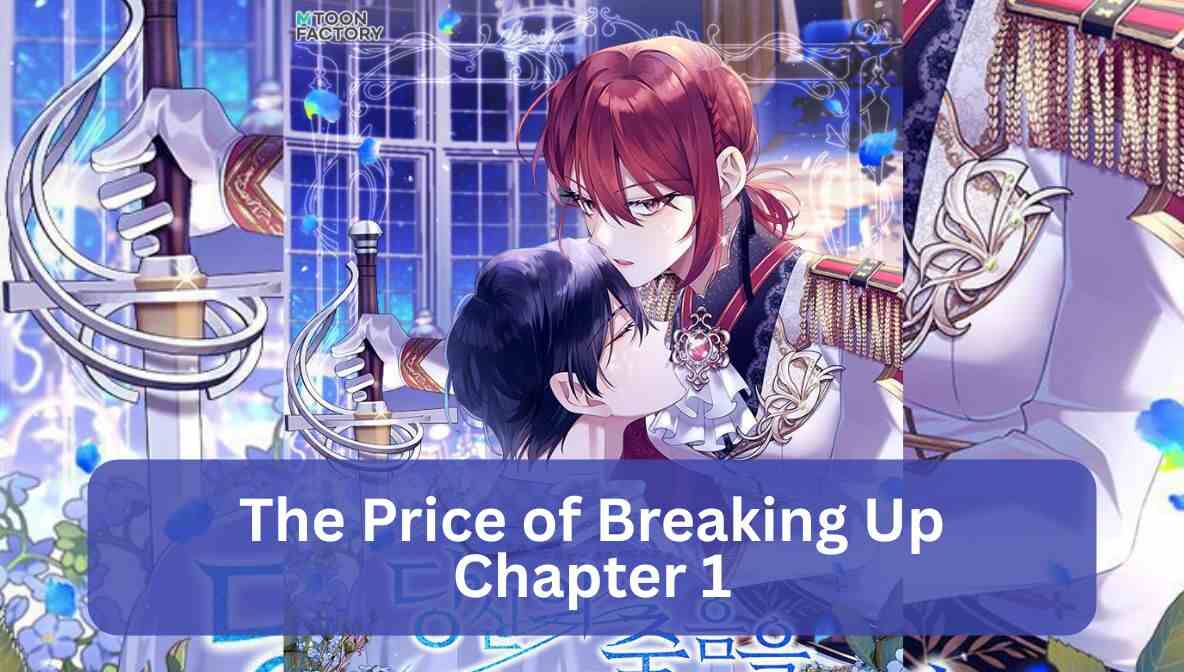The Price of Breaking Up Chapter 1 Explained
The Price of Breaking Up Chapter 1 introduces readers to a deeply emotional beginning of a romantic story filled with heartbreak, reflection, and personal growth. It opens with a powerful narrative that sets the tone for the rest of the book, focusing on the emotional cost of separation. This chapter acts as the emotional anchor for the entire story, showing how breakups go far beyond just parting ways—they affect the soul, identity, and daily routine of the characters involved.
In this opening paragraph, readers see how the main character struggles with everyday life after the breakup. From sleepless nights to awkward social moments, everything feels harder. The price of breaking up chapter 1 paints a realistic picture of post-relationship loneliness, regret, and questions that haunt the heart.
This emotional depth makes readers think about their own experiences with heartbreak. Why does love leave such a lasting mark? Why does the end feel so much heavier than the beginning? These are the kinds of reflections that make the price of breaking up chapter 1 so relatable and engaging.
Key Points:
- The story begins with emotional turmoil after a breakup.
- The chapter explores how love impacts mental health.
- Readers are drawn into the emotional cost of lost relationships.
What Is the Main Message of Chapter 1?
At its core, the price of breaking up chapter 1 delivers a simple but powerful message: healing takes time, and emotional pain is a natural part of the breakup process. The main character finds themselves in a spiral of self-doubt, asking if they made the right decisions. They scroll through old texts, revisit shared memories, and wonder what they could have done differently.
This paragraph helps us understand that the chapter does not blame one person over another—it highlights that both people suffer. Love is never one-sided when it ends; the emotional toll is shared. The writer uses inner monologues to show how heartbreak impacts sleep, eating, and even motivation to go to work.
In real life, many people experience similar things after a breakup. This comparison makes the chapter not just fiction but a mirror of real-world experiences. When you read the price of breaking up chapter 1, you realize how closely fiction can reflect truth.
Reminder: It’s okay to feel sad after a breakup. Emotions don’t follow logic—they follow the heart.
How Does the Chapter Represent Emotional Growth?
While the character starts off broken, the price of breaking up chapter 1 also plants seeds of growth. At first, the emotions are raw—tears, anger, confusion. But as the paragraph progresses, we see small signs of personal strength. For instance, the character decides to delete their ex’s number or stops checking their social media.
These small actions might seem simple, but they symbolize the beginning of emotional healing. The paragraph shows how letting go of old routines can be a painful but necessary step toward moving on. The character starts to reflect more on what they need for themselves rather than what they’ve lost.
Here’s a quick comparison of the character’s emotional state from the start to the end of the chapter:
| Emotional State | Beginning of Chapter | End of Chapter |
|---|---|---|
| Mood | Heartbroken | Calm & reflective |
| Thoughts | Regret, loneliness | Clarity, acceptance |
| Behavior | Isolated, distracted | Trying new habits |
This change, though small, shows emotional growth. The breakup still hurts, but the person begins to take control of their own recovery.
What Literary Techniques Are Used in Chapter 1?
The writing style of the price of breaking up chapter 1 is what makes it so memorable. The author uses various literary tools to bring out the depth of emotion and realism in the story.
One such tool is internal monologue. Readers are given direct access to the characters’ thoughts, which makes their pain feel personal. Another tool is symbolism—for example, the cold weather outside may represent the emotional chill the character feels inside.
Here’s a breakdown of the most used techniques:
| Technique | Purpose | Example Used in Chapter |
|---|---|---|
| Internal Monologue | Show inner conflict and emotion | “Why did I let us go?” |
| Symbolism | Reflect mood through the environment | Cold winter day |
| Flashbacks | Offer past context and emotional weight | First kiss memory |
| Repetition | Emphasize emotional pain | “I miss you” repeated |
These techniques enrich the reading experience and help convey the true emotional “price” of the breakup.
Note: Always pay attention to small literary details—they often carry big emotional messages.
Why Is This Chapter So Relatable?
One reason the price of breaking up chapter 1 connects with so many people is because it doesn’t dramatize pain—it presents it honestly. Instead of exaggerating the breakup, it shows the everyday struggles people go through: drinking coffee alone instead of with their partner, deleting photos that once meant everything, or simply lying in bed without motivation.
The author avoids clichés and instead focuses on genuine emotional reactions. The character isn’t shown as weak or overly dramatic. They’re shown as human.
Let’s compare fiction vs. real life:
| Situation | In Chapter 1 | In Real Life |
|---|---|---|
| Reaction to breakup | Sadness, insomnia, regret | Sadness, anxiety, withdrawal |
| Coping mechanism | Avoiding places they visited | Avoiding mutual friends |
| First step to recovery | Deleting contact info | Taking social media breaks |
Because these are things we all do or feel, the story resonates with a wide audience. That’s the power of writing that respects the reader’s experience.
What Can Readers Learn From This Chapter?
The price of breaking up chapter 1 offers more than just a story—it provides life lessons. It teaches that heartbreak is not the end; it’s a beginning in disguise. The chapter encourages readers to face their emotions instead of hiding from them.
Even in pain, there’s room for self-discovery. The character may have lost a relationship, but they begin to regain control of their own identity. This lesson is one that many readers need, especially when going through similar experiences.
Reminder: Growth often begins in discomfort. Pain is part of the process of healing.
So, whether you’re in a relationship, just got out of one, or are still healing, the price of breaking up chapter 1 gives you a safe space to feel your emotions and take the first step toward healing.
Conclusion
The price of breaking up chapter 1 is more than just the start of a love story—it’s a mirror to the emotional journey many face after heartbreak. Through its deep emotions, relatable story, and literary techniques, it shows that there’s always light after loss. Whether you’ve experienced heartbreak or not, this chapter offers valuable lessons on emotional strength, growth, and the human heart’s ability to heal.
If you ever felt like your emotions were too much or that you were alone in your pain, this chapter will remind you: you’re not. Healing is possible, and your story isn’t over.
FAQ’s
1. What is “the price of breaking up chapter 1” about?
It’s about the emotional aftermath of a breakup and how the main character begins the healing process.
2. Is this chapter based on real-life experiences?
While it’s fiction, the emotions and events are very relatable and realistic for anyone who has faced heartbreak.
3. Who is the main character in “the price of breaking up chapter 1”?
The story centers around a person dealing with post-breakup emotions, though the name may vary by version or adaptation.
4. What makes this chapter stand out?
Its honesty and emotional depth, as well as the way it uses everyday events to show emotional pain.
5. Can this chapter help people going through a breakup?
Yes, it offers comfort, insight, and hope for those currently healing from a relationship ending.



